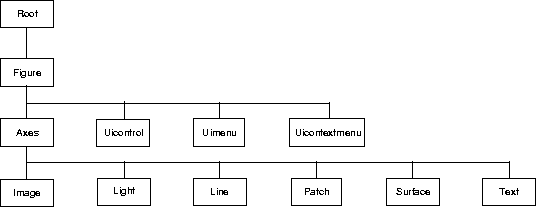Copy graphics objects and their descendants
Syntax
new_handle = copyobj(h,p)
Description
copyobj creates copies of graphics objects. The copies are identical to the original objects except the copies have different values for their Parent property and a new handle. The new parent must be appropriate for the copied object (e.g., you can copy a Line object only to another Axes object).
new_handle = copyobj(h,p)
copies one or more graphics objects identified by h and returns the handle of the new object or a vector of handles to new objects. The new graphics objects are children of the graphics objects specified by p.
Remarks
h and p can be scalars or vectors. When both are vectors, they must be the same length and the output argument, new_handle, is a vector of the same length. In this case, new_handle(i) is a copy of h(i) with its Parent property set to p(i).
When h is a scalar and p is a vector, h is copied once to each of the parents in p. Each new_handle(i) is a copy of h with its Parent property set to p(i), and length(new_handle) equals length(p).
When h is a vector and p is a scalar, each new_handle(i) is a copy of h(i) with its Parent property set to p. The length of new_handle equals length(h).
Graphics objects are arranged as a hierarchy. Here, each graphics object is shown connected below its appropriate parent object.

Examples
Copy a Surface to a new Axes within a different Figure:
h = surf(peaks);
colormap hot
figure % Create a new Figure
axes % Create an Axes object in the Figure
new_handle = copyobj(h,gca);
colormap hot
view(3)
grid on
Note that while the Surface is copied, the colormap (Figure property), view, and grid (Axes properties) are not copies.
See Also
findobj, gcf, gca, gco, get, set
Parent property for all graphics objects
[ Previous | Help Desk | Next ]
